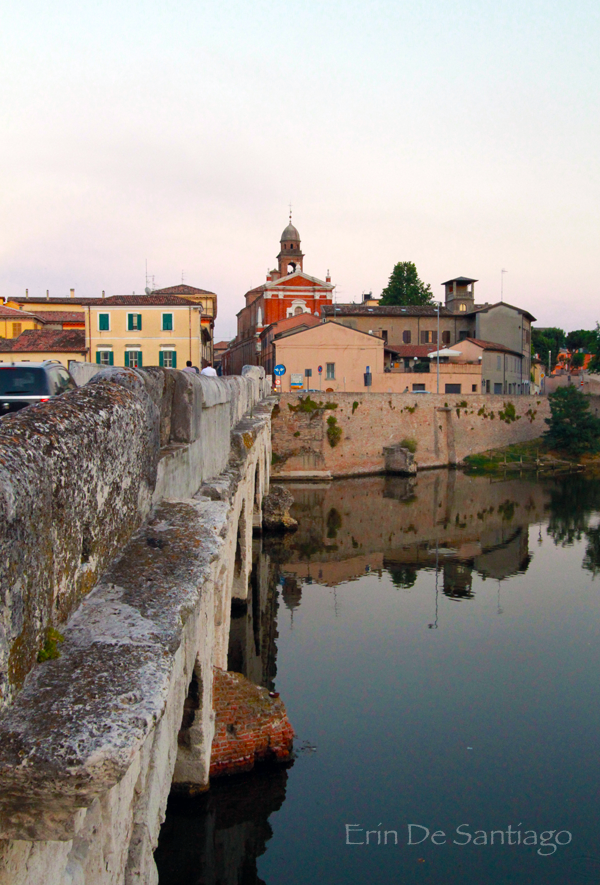
Ponte di Tiberio (Tiberius Bridge) in Rimini: One of Italy’s Oldest Roman Bridges
On the surface, the beachfront town of Rimini, Italy seems like a very modern place to lay down your beach towel and party for a few days. What I quickly discovered however is the ‘centro storico’ portion of Rimini is home to some interesting and important structures dating back to Roman times. During my stay for the BlogVille project, my first roommate joked about wanting to visit this particular bridge but continued to miss it after being sidetracked by the decadent gelato shops along the way. After sampling two of them on a subsequent trip, I can certainly understand why! One evening during the last week of BlogVille, four of us (Norbert from Globotreks, Kathryn from Travel with Kat, Suzanne from The Travel Bunny, and I) set out to explore the historic area of Rimini. Surviving the repeated calls of the gelato (admittedly, we stopped at one first), we did make our way across town and happened upon the Ponte di Tiberio right as the sun was setting. Once we arrived to Ponte di Tiberio, I instantly forgot the Adriatic Sea and 1,000+ modern hotels and bars just minutes away.



Tiberius Bridge Dates Back to Ancient Roman Times
If you don’t know anything about the history of the Tiberius Bridge, you might think it’s just a beautiful stone bridge and go about your walk. Also called Ponte d’Augusto, this particular bridge dates back to ancient Roman times, with construction starting under Augustus’ reign in 14 A.D., and seeing completion under his successor Tiberius’ reign, in 21 A.D.

Importance and Construction of Ponte di Tiberio
Located at the northern end of the main street, Corso d’Augusto, Ponte di Tiberio connects Roman Rimini with the suburbs of San Giuliano. It was built with all Istrian limestone and stretches 70 meters long with five arches. The Doric style bridge was originally built to cross the Marecchia River, but the river was later diverted, shortly before the Second World War. The water seen today is just the “marina” of Rimini. The bridge is quite important given it became a major connector. From it came two consular roads, the Via Emilia and the Via Popilia, which are still in use today. The Via Emilia connects to the northern end of the Emilia Romagna region in Piacenza, while the Via Popilia went through Ravenna to Aquileia.


Inscriptions on Tiberius Bridge
One of the key elements of this historic bridge is the inscriptions not easily seen when the sun is quickly setting — but there are inscriptions noting Augustus and Tiberius and the bridge is “given from two emperors”.


Ponte di Tiberio Has Resisted Destruction
Getting a brief history lesson on this bridge prior to visiting was definitely eye-opening. Not only is it one of the oldest bridges, it has resisted destruction from earthquakes and wars. It is said to be the only bridge on the Marecchia that German forces were unable to destroy during World War II, despite repeated attempts. One reason it may have withstood battle is what lies beneath the waterline. The foundations are not disjointed from each other, but are on a system of wooden poles, ensuring its stability. Today, the bridge is open to vehicular and pedestrian traffic, barring heavy trucks.

If you are into historical sights while traveling, definitely carve out some time to explore the Roman part of Rimini and the Tiberius Bridge. Sunset is a great time to go and then you can wander over the bridge and enjoy a nice dinner — just be sure to bring bug spray. Not sure who ate more — me or the mosquitos who feasted on me that night!

